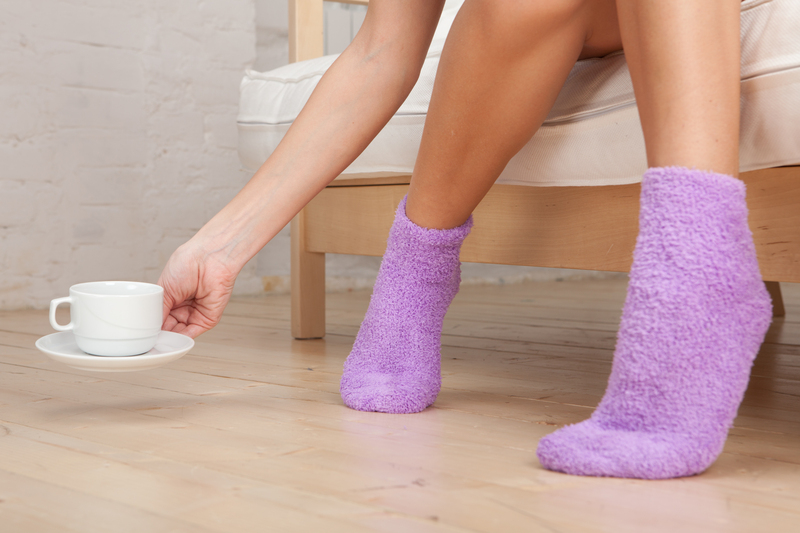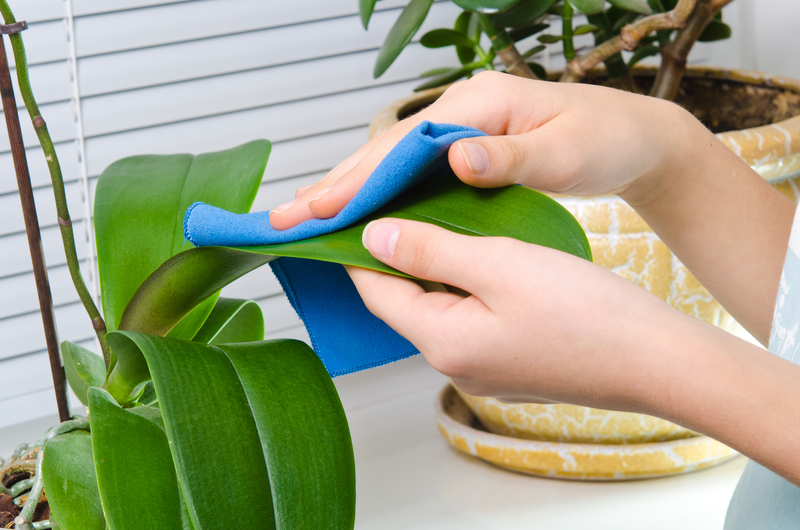Unlock the Secrets to Spotless Curtain Cleaning
Posted on 22/05/2025
Unlock the Secrets to Spotless Curtain Cleaning
Curtains are more than just decorative flourishes; they protect against sunlight, dust, and prying eyes, providing both function and elegance to any space. However, their constant exposure to outdoor elements makes curtain maintenance essential. This in-depth guide will unlock the secrets to spotless curtain cleaning, exploring effective techniques, expert tips, and smart habits to ensure your window dressings remain as beautiful as the day you hung them.

Why Is Curtain Cleaning So Important?
Many homeowners overlook the importance of regular curtain cleaning. Over time, curtains subtly gather accumulations of dust, pet dander, pollen, and even microscopic pollutants. In humid or poorly ventilated environments, mold or mildew can also take hold, leading to unpleasant odors and potential health concerns.
- Improved Air Quality: Clean curtains mitigate the spread of allergens, benefiting sensitive respiratory systems.
- Prolonged Fabric Life: Routine cleaning keeps fabric fibers strong and prevents early wear or discoloration.
- Enhanced Appearance: Spotless curtains elevate your interior design, making spaces feel fresher and more inviting.
With the right approach, you can achieve spotless curtain cleaning effortlessly and maintain a healthier, more stylish home.
Understanding Different Curtain Materials
Before beginning any curtain cleaning process, understanding your curtain's fabric is fundamental. Different materials require different care to avoid shrinking, fading, or other damage. Here's a breakdown of typical curtain fabrics and their unique cleaning needs:
- Cotton Curtains: Durable and generally machine washable. However, always check care labels for specific recommendations.
- Linen Curtains: Lightweight but prone to shrinking. Gentle hand washing or dry cleaning is often preferred.
- Velvet Curtains: Luxurious but delicate--vacuum regularly and opt for dry cleaning unless the manufacturer states otherwise.
- Silk Curtains: Highly sensitive to water and sunlight, silk curtains usually require professional dry cleaning.
- Synthetic Curtains (polyester, nylon): Stain-resistant, often machine-washable on gentle settings.
- Thermal/Blackout Curtains: Special coatings require spot cleaning; avoid saturating the backing with water.
Always review the manufacturer's care label before starting your curtain cleaning journey.
Myth-Busting: Not All Curtains Can Be Washed the Same Way!
A common misconception is that all curtains can simply be tossed into a washing machine. In reality, different fabrics and linings demand tailored cleaning strategies to avoid permanent damage. For example, blackout curtains can lose their light-blocking function if improper cleaning degrades the backing; meanwhile, unlined cotton curtains are usually robust enough for regular washes.
Comprehensive Methods for Spotless Curtain Cleaning
1. Basic Maintenance: Dusting and Vacuuming
Regular dusting and vacuuming are your first line of defense against the build-up of dirt and allergens. Ideally, this should be done at least once a fortnight, or weekly if you live in a high-dust area or have pets.
- Use a vacuum cleaner with a soft brush attachment: Start at the top and work downwards, focusing on pleats and folds where dust settles.
- Shake curtains outdoors: For lighter fabrics, regularly shaking your curtains outside can dislodge surface dust quickly.
- Lint rollers or sticky tape: Effective for removing pet hair and fluff without disturbing the curtain fabric.
2. Spot Cleaning Stains
Spotless curtain cleaning sometimes means addressing individual stains without washing the entire curtain. Here's how:
- Check the care label: Only spot clean if recommended for your fabric type.
- Blot, never rub: When a stain occurs, gently blot with a clean, white cloth to lift the substance instead of pushing it deeper.
- Mild detergent solution: Mix a few drops of gentle detergent in lukewarm water. Dip a cotton swab or corner of the towel, dab the spot, and blot dry.
- Test in an inconspicuous area: Before treating the stain, ensure the solution does not damage or discolor the fabric.
For oily stains, consider using a **tiny amount** of cornstarch to absorb the grease before spot cleaning. For organic stains (wine, berries), use a diluted vinegar solution, but always patch-test first.
3. Machine Washing Curtains: Steps to Success
- Read the fabric label: Ensure the curtain is machine-washable.
- Remove hooks, rings, and accessories: Prevents damage to both curtains and washing machine.
- Shake outdoors first: This removes loose dust and mitigates clogging your washing machine.
- Choose a gentle cycle: Use cold water and a mild detergent to avoid damaging fabric or fading colors.
- Don't overload the machine: Launder curtains separately to allow ample room for movement.
After washing, **hang curtains while slightly damp** to reduce creases and speed up the drying process. Avoid direct sunlight for sensitive fabrics like silk or linen.
4. Hand-Washing Delicate Curtains
If your curtains are made from delicate or lined fabrics, hand-washing is the safest approach.
- Fill a clean tub or sink: Use lukewarm or cold water and a spoonful of gentle detergent.
- Soak gently: Submerge the curtains without twisting or wringing, and agitate softly with your hands.
- Rinse thoroughly: Empty the soapy water and rinse with clean water multiple times to remove all residue.
- Dry carefully: Gently squeeze out excess water (don't wring!) and hang to dry on a sturdy rod or shower rail.
Hand-washing helps maintain the
flawless appearance of even the most sensitive curtain materials.
5. Professional Curtain Cleaning
For complex fabrics, heavy drapes, or curtains with elaborate decorations, professional dry cleaning may be your safest option. This method uses specialized chemicals and equipment, preserving the integrity of the curtain's fibers and decorative elements.
- Silk, velvet, brocade curtains: Almost always require professional attention.
- Extensive staining: Professionals can tackle stubborn spots that home remedies miss.
- Special linings or fabric blends: Let experts determine the best cleaning solution to avoid irreversible damage.
When in doubt, consult with a reputable dry cleaner offering curtain-specific services.
Tips for Drying Curtains Properly
Drying is as important as washing for achieving spotless curtain cleaning results. Poor drying can lead to wrinkles, shrinkage, or water spots.
- Hang promptly: Curtains dry best when hung up immediately after washing, allowing gravity to smooth out creases.
- Iron if necessary: Use a low-heat setting on the reverse side for cotton or linen curtains. Steamers work well for heavier fabrics without direct contact.
- Avoid tumble drying: Most curtains are best air-dried to maintain their size and shape.
- Sunlight caution: Strong sunlight can bleach colors and weaken natural fibers. Dry curtains in the shade or indoors where possible.
How to Keep Curtains Clean Longer
Regular cleaning is only part of the solution. Adopt these simple maintenance habits to extend the time between deep cleans:
- Ventilate Rooms: Open windows to reduce moisture build-up, which discourages mold and mildew.
- Use Air Purifiers: Filter out dust and pollen to lessen the load on your curtains.
- Pet Grooming: Limp rollers and brushing pets regularly reduces shedding.
- Rotate Curtains: If possible, switch heavy drapes with lighter ones seasonally to distribute wear.
- Quick Spot Treatments: Address small stains immediately with gentle cleaning, rather than letting them set in.
Maintaining this routine will unlock the secret to spotless curtains all year round.
Removing Odors from Curtains
Even spotless curtains can harbor unwanted odors from cooking, humidity, or environmental allergens. To freshen curtains between deep cleanings:
- Baking Soda: Sprinkle on fabric, allow to sit, and vacuum away to neutralize smells.
- Fabric Fresheners: Lightly mist curtains with fabric sprays--avoid oversaturating to prevent water spots.
- Vinegar Steam: Hang curtains in a steamy, vinegar-amended bathroom for a natural deodorizing boost.
Consistent freshening improves your indoor environment and reduces the frequency with which you need to undertake more intensive curtain cleaning.
Frequently Asked Questions About Curtain Cleaning
1. How Often Should You Clean Curtains?
At minimum, vacuum or dust your curtains every 2-4 weeks and deep clean every 6-12 months. Households with pets, smokers, or high traffic may require more frequent attention.
2. Can You Machine Wash All Curtains?
No. Always check care labels first. Machine washing is generally safe for cotton and some synthetics, but risky for silk, velvet, and lined blackout curtains.
3. What About Sheer or Net Curtains?
Wash sheers gently in cold water, either by hand or in a mesh laundry sack on a delicate machine cycle. They dry quickly when hung while damp.
4. Do I Need Special Detergents?
For most curtains, a mild or fragrance-free detergent is best. Harsh chemicals may damage natural fibers or cause fading.
5. Can Steaming Clean Curtains?
Yes! A handheld fabric steamer can refresh and sanitize most curtain fabrics between deep cleans, removing light wrinkles and odors.
Eco-Friendly Curtain Cleaning Solutions
More homeowners are seeking environmentally friendly solutions for achieving spotless curtain cleaning. Here are some eco-conscious tips:
- Use biodegradable detergents: Choose plant-based, phosphate-free cleaners to reduce environmental impact.
- Cold water washes: Lower wash temperatures save energy and are gentler on delicate fabrics.
- Air-drying: Skip the dryer to preserve both energy and curtain lifespan.
- Natural deodorizers: Lemon juice, vinegar, or baking soda can freshen fabrics without commercial chemicals.

When Should You Replace Curtains Rather Than Clean?
While spotless curtain cleaning can rejuvenate most window treatments, there are times when replacement is necessary:
- Persistent Stains: Set-in marks, especially from mold or ink, may be impossible to remove without damaging the fabric.
- Structural Damage: Torn seams, frayed hems, or threadbare fabric warrant replacement for both appearance and safety.
- Faded Colors: If curtains are severely faded, no amount of cleaning will restore their original vibrancy.
Conclusion: Shine a Light on Spotless Curtain Cleaning!
Unlocking the secrets to spotless curtain cleaning isn't just about restoring beauty--it's about maintaining health, comfort, and value in your home. By understanding your curtain materials, using the right cleaning techniques, and practicing regular maintenance, you'll ensure your window hangings stay fresh, elegant, and inviting year-round. Whether you choose hands-on methods or professional help, the strategies outlined here will guide you to curtain-cleaning success. Start today and transform your living space with curtains that look--and smell--as good as new!
Remember: A cleaner home starts with your curtains. Happy cleaning!




